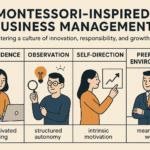2024-07-21
| No Comments

Foundations of Strategic Decision Making
1. Introduction to Strategic Decision Making
Definition of Strategic Decision Making:
- Strategic decision making involves long-term planning and setting directions for an organization, with a focus on achieving major goals and initiatives.
- It encompasses decisions that have significant impacts on an organization’s future, resource allocation, and market position.
2. Definition and Scope of Strategic Decision Making
Definition:
- Strategic decision making refers to the process of making choices by setting a direction for the organization, typically involving long-term planning, analysis, and assessment of external and internal factors.
- It aims to create and sustain competitive advantage and align with the organization’s mission and vision.
Scope:
- Long-Term Focus: Emphasizes decisions that affect the organization over the long term, often 3-5 years or more.
- Resource Allocation: Involves decisions on how to allocate and optimize resources such as capital, human resources, and technology.
- Competitive Positioning: Aims to establish and maintain a competitive position in the market through unique value propositions.
- Risk and Uncertainty: Considers the impact of risk and uncertainty in the business environment, requiring flexible and adaptive strategies.
- Organizational Impact: Influences various aspects of the organization, including culture, structure, and processes.
3. Types of Strategic Decisions
Corporate-Level Decisions:
- Scope: Determine the overall direction and scope of the organization, including decisions on entering or exiting markets, mergers and acquisitions, and diversification.
- Examples: Acquiring a competitor, entering a new international market, launching a new product line.
Business-Level Decisions:
- Scope: Focus on how to compete successfully in particular markets, addressing issues such as competitive strategy, market positioning, and product differentiation.
- Examples: Adopting a cost leadership strategy, enhancing product features to differentiate from competitors.
Functional-Level Decisions:
- Scope: Involve decisions within specific functions such as marketing, finance, human resources, and operations, aiming to support higher-level strategic objectives.
- Examples: Implementing a new marketing campaign, optimizing supply chain processes, developing talent management programs.
4. Decision-Making Process Overview
Step 1: Identify the Problem or Opportunity:
- Recognize the strategic issue or opportunity that requires a decision.
- Assess the context and significance of the issue within the organization’s strategic framework.
Step 2: Gather Information and Analyze Data:
- Collect relevant data and information from internal and external sources.
- Use tools such as SWOT analysis, PESTEL analysis, and competitive analysis to understand the environment.
Step 3: Develop Alternatives:
- Generate a range of potential strategic options or solutions.
- Encourage creativity and innovation in developing alternatives.
Step 4: Evaluate Alternatives:
- Assess each alternative based on criteria such as feasibility, risk, alignment with strategic goals, and potential impact.
- Use quantitative and qualitative analysis methods.
Step 5: Make the Decision:
- Choose the best alternative based on the evaluation.
- Consider the input of key stakeholders and decision-making authorities.
Step 6: Implement the Decision:
- Develop an implementation plan that outlines actions, timelines, responsibilities, and resource requirements.
- Communicate the decision and implementation plan to all relevant parties.
Step 7: Monitor and Review:
- Track the progress of the implementation against the plan.
- Adjust the strategy as needed based on feedback and changing conditions.
- Evaluate the outcomes and learn from the experience to improve future decision-making processes.
5. Case Study: Strategic Decision Making in Practice
Background:
- Brief overview of a real or hypothetical organization facing a strategic decision.
- Description of the strategic issue or opportunity.
Application of Decision-Making Process:
- Step-by-step application of the strategic decision-making process to the case.
- Identification of the problem, data gathering, development and evaluation of alternatives, decision-making, implementation, and review.
Lessons Learned:
- Key takeaways from the case study.
- Insights into the challenges and best practices in strategic decision making.
- Recap of the importance and scope of strategic decision making.
- Emphasis on the structured process for making informed and effective strategic decisions.
- Encouragement to apply these principles and processes in real-world scenarios to drive organizational success.
This detailed lesson content provides a comprehensive overview of the foundations of strategic decision making, covering essential definitions, types of decisions, and a structured decision-making process.
Views: 5
Related Posts:
Categories: Decision Making
















